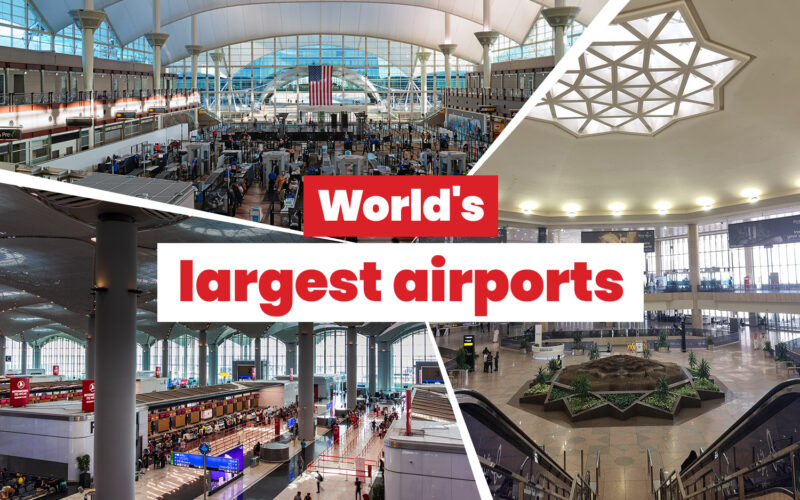More than 4,000 airports worldwide have regularly scheduled commercial flights, handling more than 96 million aircraft movements a year. They range from the tiny Juancho E Yrausquin Airport, located on the Dutch Caribbean island of Saba, to sprawling airport cities that spread for dozens of square miles.
According to OAG, the busiest airport in the world is Atlanta Hartsfield-Jackson (ATL), which handled almost 63 million passengers in 2024. But when it comes to the biggest airports in the world, Atlanta’s 7.3 square mile site doesn’t even make the top 10.
Let’s take a look at the largest airports in the world in terms of land mass as they stand at the start of 2025.
* Please note that sizes are approximate and use rounded values.
10. Shanghai Pudong International Airport (PVG)
16 square miles
| Opened | 1999 |
| Hubbed airlines | Air China, China Eastern, China Southern, Juneyao, Suparna, Shanghai Airlines |
| Annual passenger traffic | 55 million (2023) |
| Runways | 5 |
| Terminals | 2 |
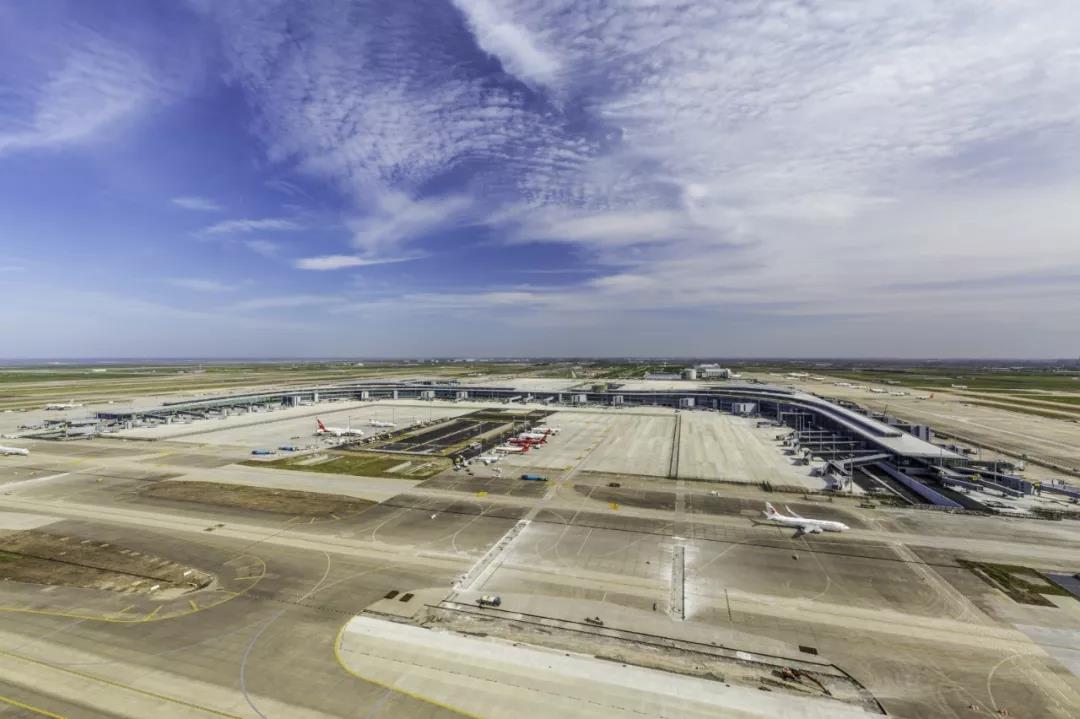
Shanghai Pudong Airport is one of two sprawling facilities dedicated to serving the city of Shanghai in China. While its sister airport, Shanghai Hongqiao, mainly serves regional and domestic flights, Pudong hosts the majority of the city’s international connections.
As well as being a hub for major Chinese airlines, Pudong is an important cargo hub for freight companies including FedEx, UPS and DHL. Alongside the 55 million travelers that passed through the airport in 2023, more than 3.4 million tons of cargo was handled too.
As it stands, with its five runways and two passenger terminals, Pudong is starting to bump up against its maximum capacity. But with plenty of space to grow, work is already underway to construct a third passenger terminal and two additional runways, taking its passenger capacity from 60 to 80 million a year and giving it the ability to handle up to six million tons of freight.
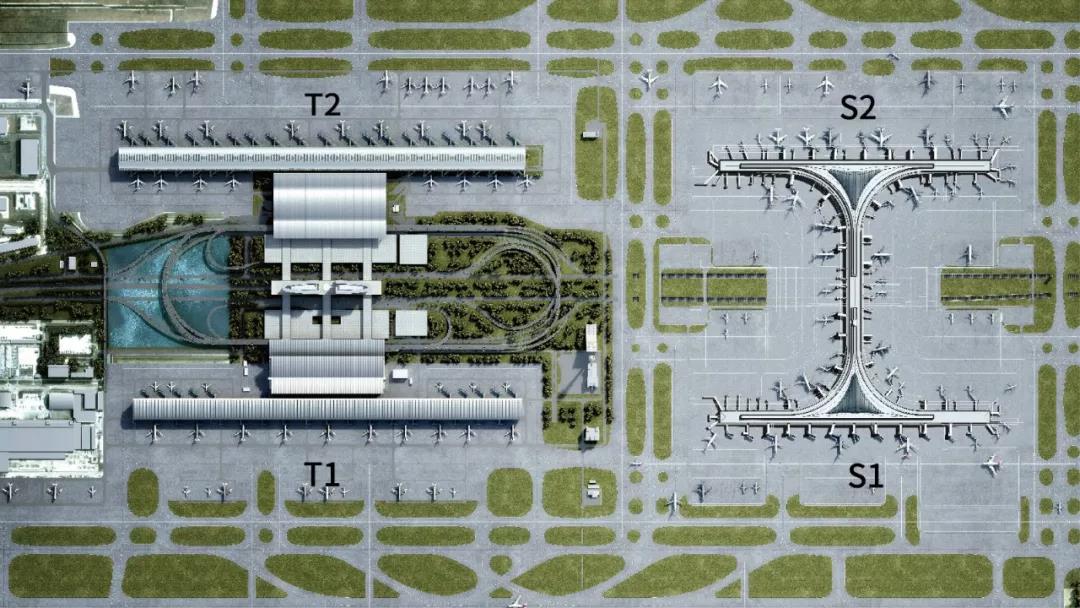
Shanghai Pudong Airport’s 16 square miles of land makes it the biggest airport in China, but its buildings are not the largest. For that, you need to look to the north, where Beijing Daxing Airport hosts the world’s largest airport terminal. Its distinctive starfish-shaped terminal covers more than ten million square feet, and is designed to make passenger connections easier by keeping gates and checkpoints close together.
9. Washington Dulles International Airport (IAD)
18 square miles
| Opened | 1962 |
| Hubbed airlines | United Airlines, Southern Airways Express |
| Annual passenger traffic | 25 million (2023) |
| Runways | 4 |
| Terminals | 1 + 2 concourses |
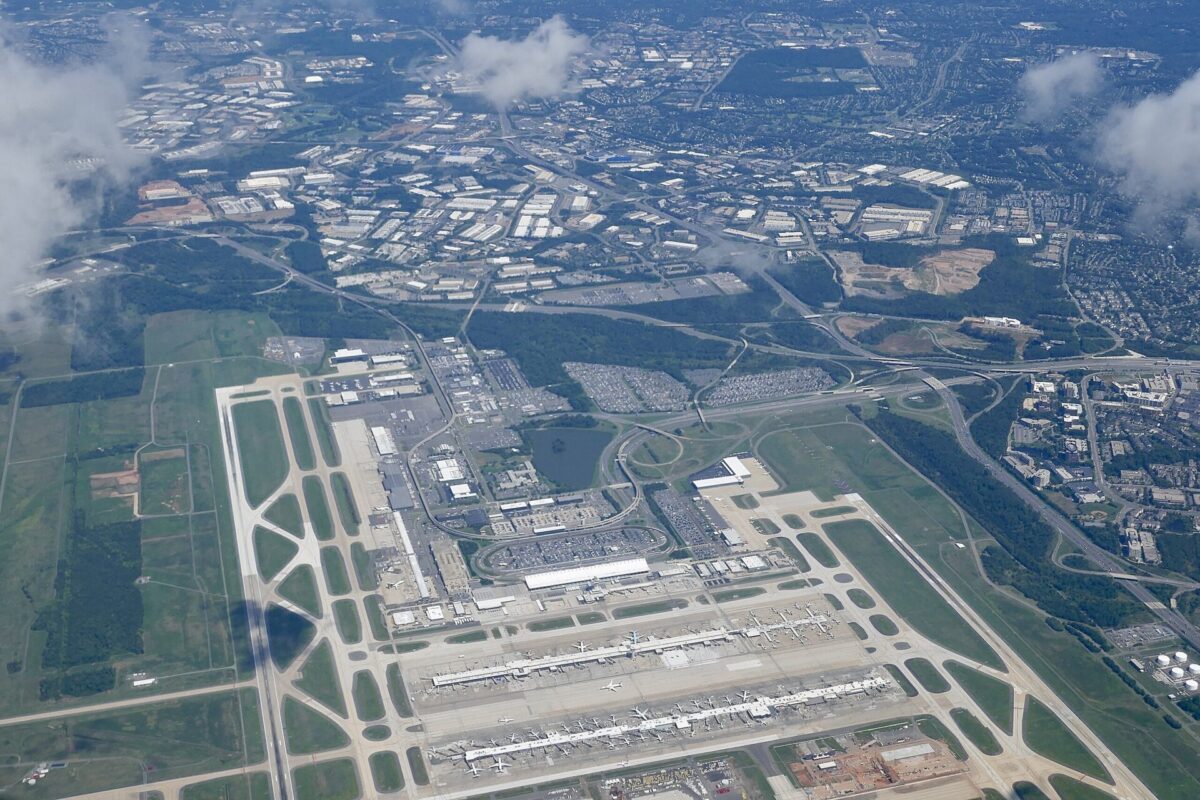
Washington Dulles International Airport, commonly referred to as Dulles International Airport, has been in operation since 1962. It is both the first and main hub for United Airlines and one of several hubs for Southern Airways Express. At 18 square miles, it’s the ninth-largest airport in the world and fifth largest in the US.
The airport sees service from airlines all over the world, including Air China, Air France and Air India. United Airlines dominates, but low-cost airlines Allegiant and Breeze also have a prominent presence here.
The airport’s code is IAD, which doesn’t seem to fit with its name. The reason for this is that, when handwritten, its original code – DIA for Dulles International Airport – was often misread as DCA, the code for Washington National. To avoid confusion, the airport switched the letters around, and IAD now stands for International Airport Dulles.
Even that name has been up for debate, as Senator Bob Dole proposed changing it to Washington Eisenhower International in 1990, although the bill didn’t pass. More recently, Congress has made efforts to rename it Donald J. Trump International Airport, and the debate about whether it will change is ongoing.
8. Orlando International Airport (MCO)
20 square miles
| Opened | 1961 |
| Hubbed airlines | Silver Airways |
| Annual passenger traffic | 58 million (2023) |
| Runways | 4 |
| Terminals | 3 |
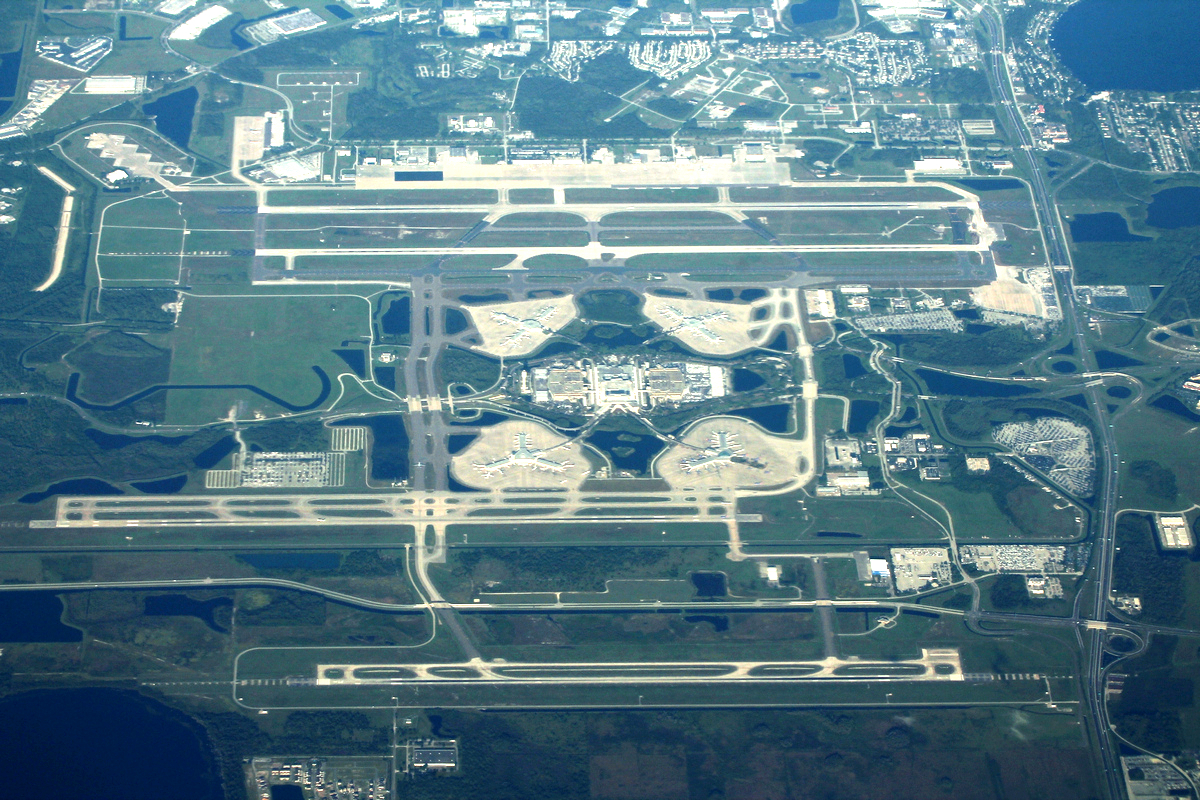
Opened in 1961, Orlando International Airport serves as a hub for Silver Airways and has a significant presence from several low-cost airlines, including Frontier, Breeze, Spirit and Southwest. With a landmass of 20 square miles, it’s the fourth largest airport in the US and eighth biggest in the world.
The airport code MCO derives from the airport’s former name. McCoy Air Force Base was in operation here before closing in 1975. Today, it hosts more than 850 daily flights from 44 different airlines, helping more than 58 million passengers get on their way each year.
It has three terminals, A, B and C, but is working to add one more. Building work on Terminal D will commence when the annual passenger traffic rises to 70 million, and it should provide the airport with a final capacity to handle 100 million passengers each year.
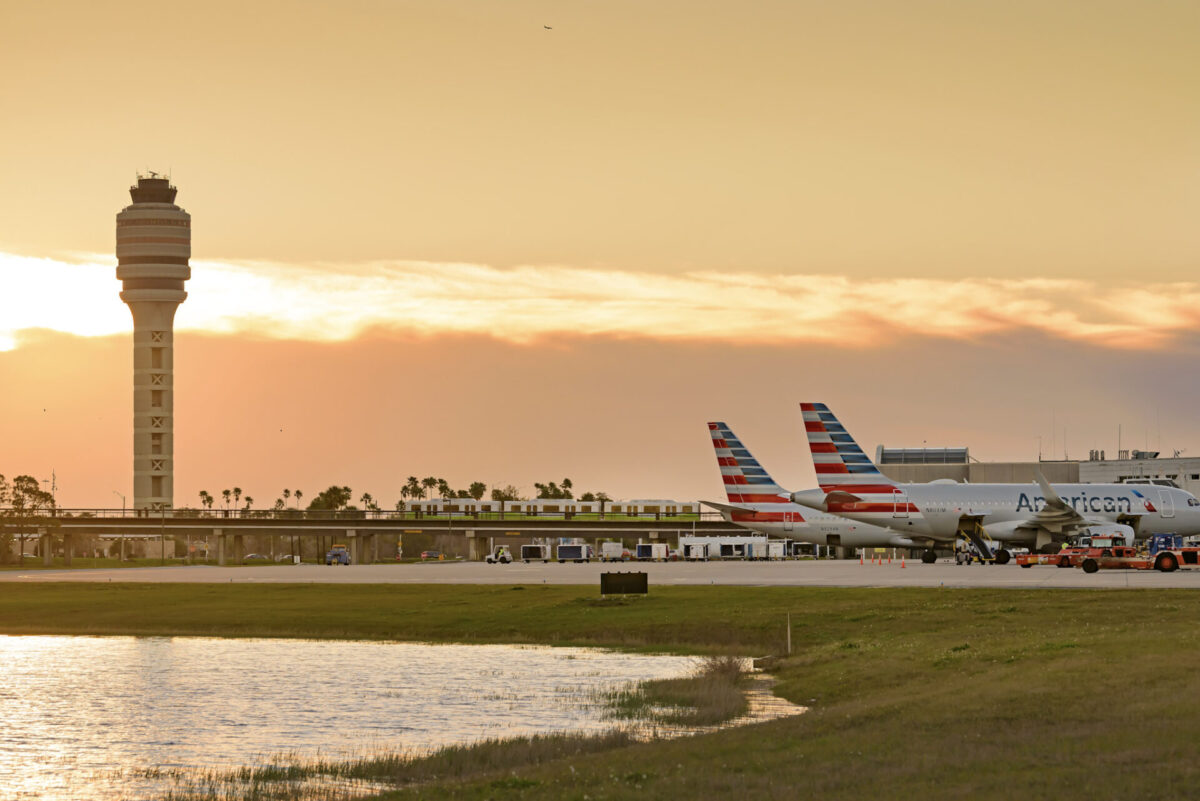
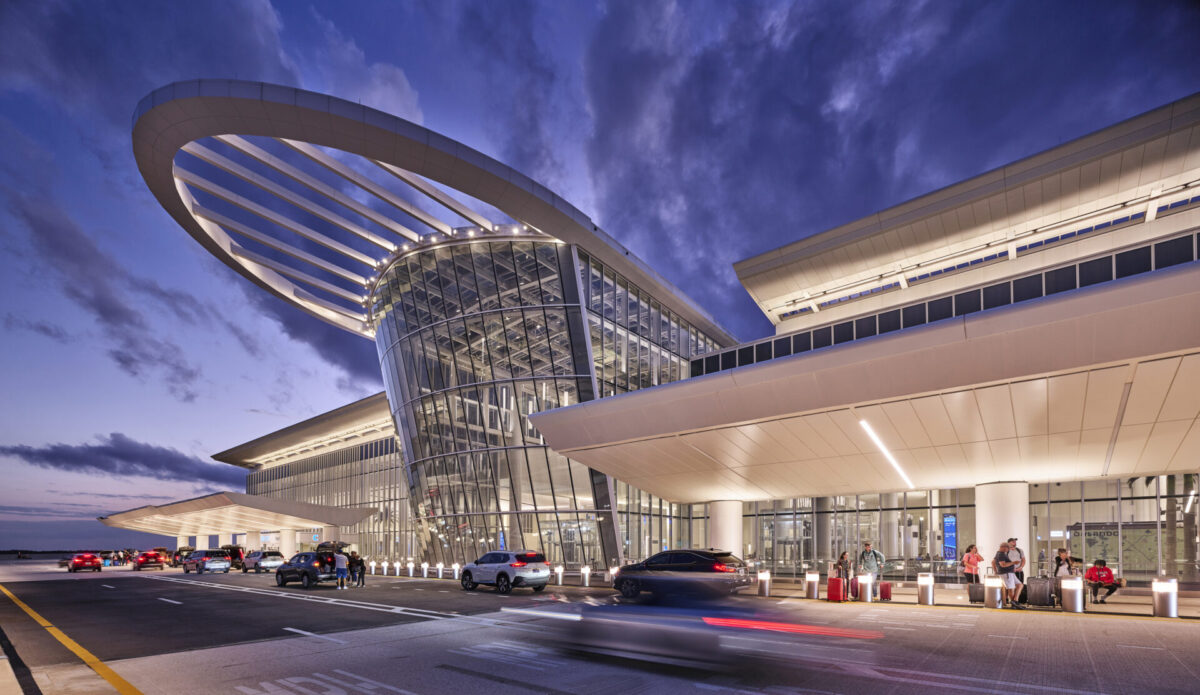

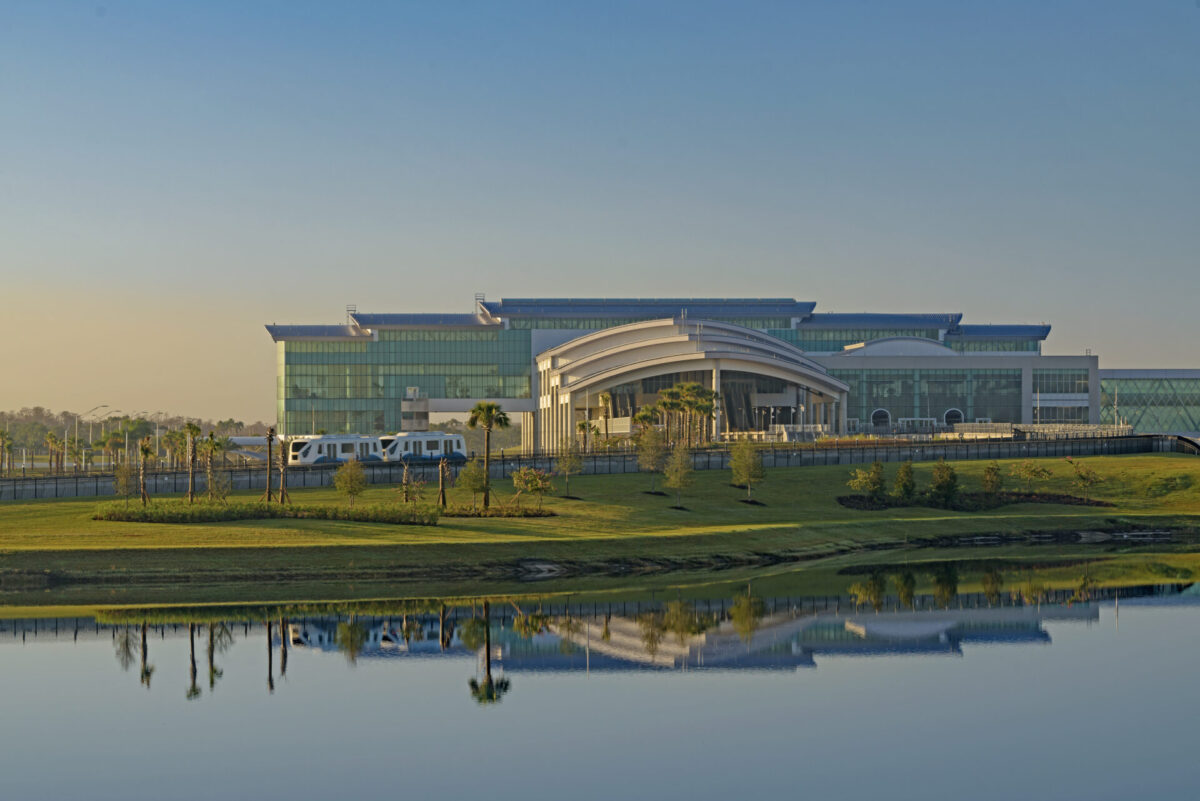
Orlando is home to the busiest domestic USA flight route, connecting it to Atlanta (ATL). Just short of 3.5 million seats were offered for sale on this route last year, the most of any city-pair in the US.
7. Southwest Florida International Airport (RSW)
21 square miles
| Opened | 1983 |
| Hubbed airlines | Breeze Airways (base) |
| Annual passenger traffic | 58 million (2023) |
| Runways | 1 |
| Terminals | 1 + 3 concourses |
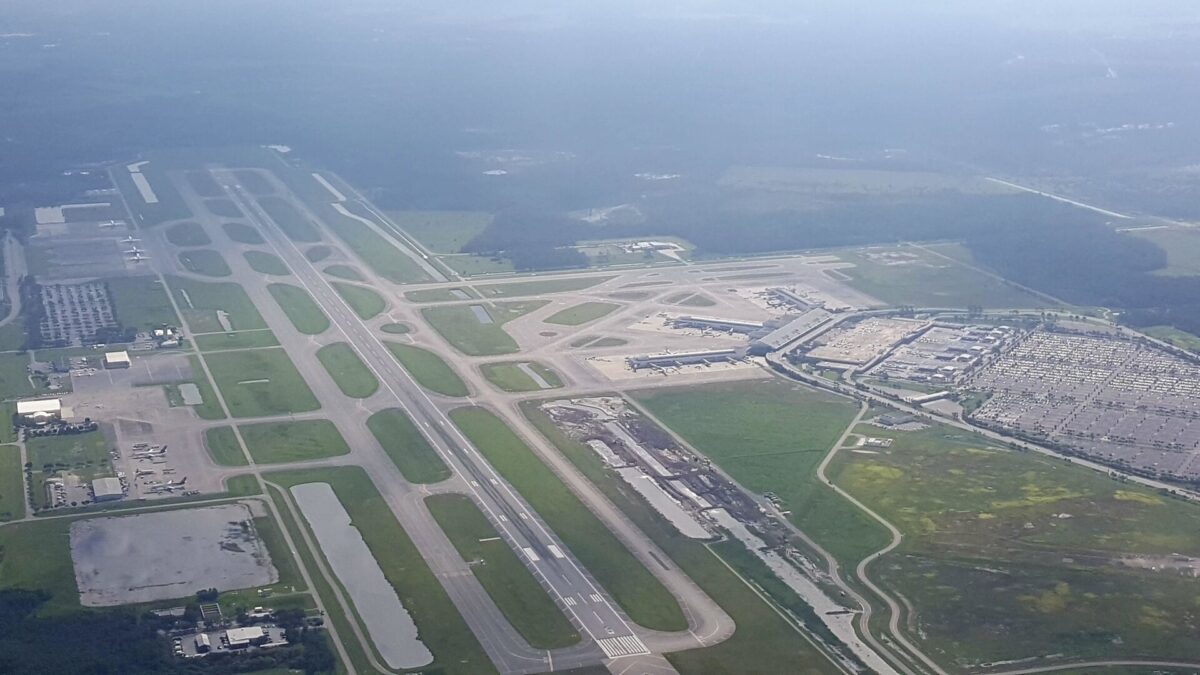
Southwest Florida Airport is located southeast of Fort Myers and serves as an important gateway to the southwest Florida region. Despite serving 58 million passengers a year, it has only one runway and is the second busiest single-runway airport in the US after San Diego (SAN).
Its huge 21 square mile site makes it the third largest airport in the States, and seventh largest in the world. Not all of the site is used for aviation, though. 6,000 acres have been conserved as swampland and set aside for environmental projects.
Work is ongoing to relocate the security checkpoints in a bid to ease wait times. By moving the checkpoints, the airport will be able to create more retail outlets and post-security space for passengers. Another concourse is also under construction, with works estimated to be completed in 2027.
6. Dallas/Fort Worth International Airport (DFW)
27 square miles
| Opened | 1973 |
| Hubbed airlines | American Airlines, Southern Airways Express |
| Annual passenger traffic | 81 million (2023) |
| Runways | 7 |
| Terminals | 5 |
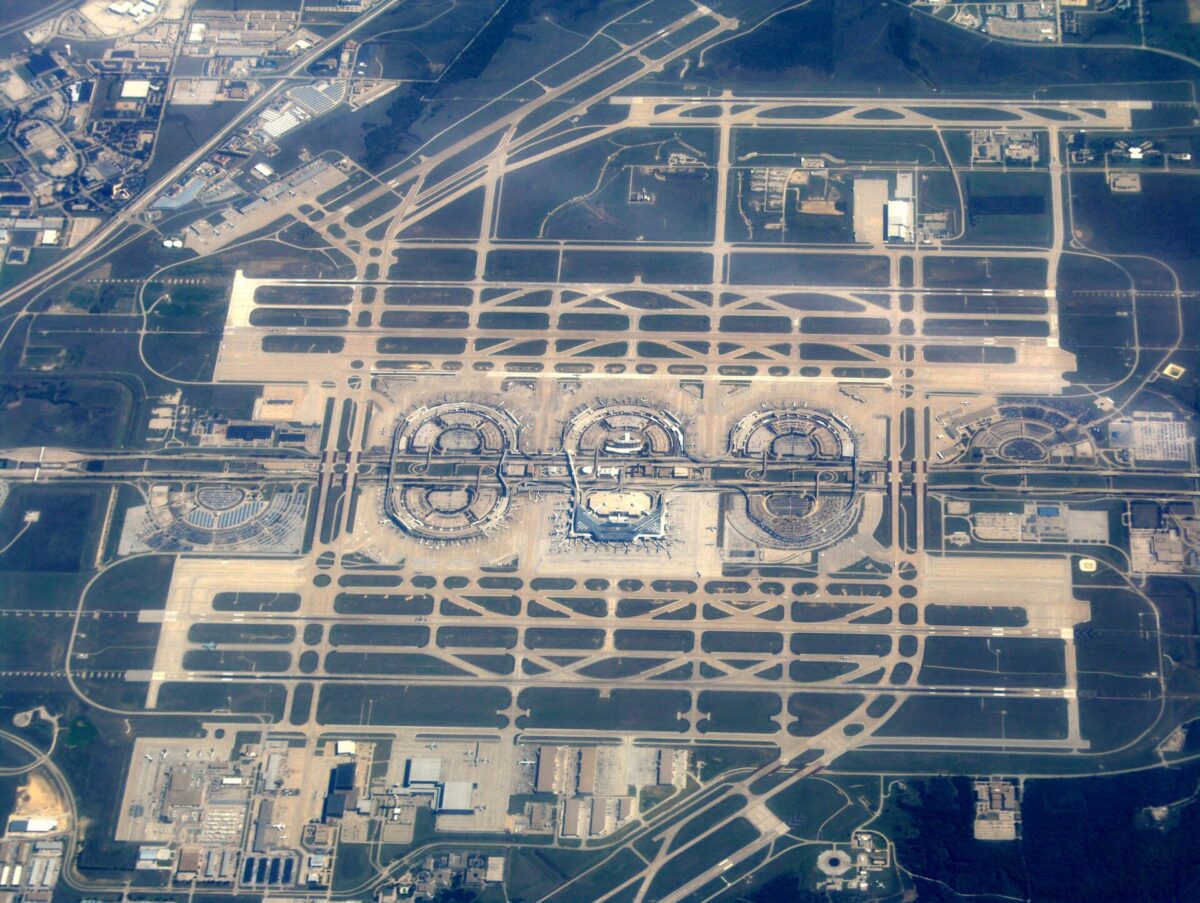
Since 1973, Dallas/Fort Worth International Airport, based in Texas, has played a pivotal role as a major aviation hub for various airlines, including American Airlines, Ameriflight, Southern Airways Express and UPS Airlines. Additionally, it is a base for Spirit Airlines and Frontier.
With a landmass of 27 square miles, Dallas is the second-largest airport in the US and the sixth-largest in the world. According to OAG, in 2024 it was the second busiest airport in America and fifth busiest in the world, and has grown 7% since 2023.

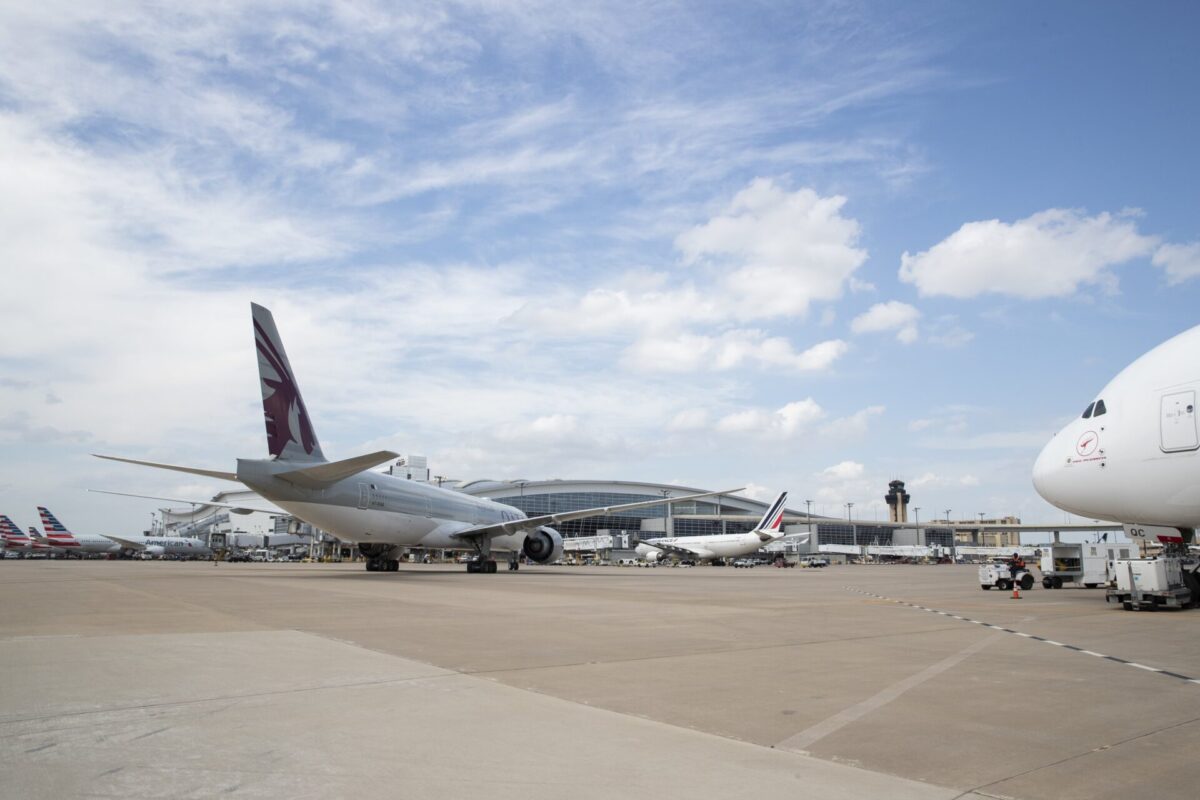

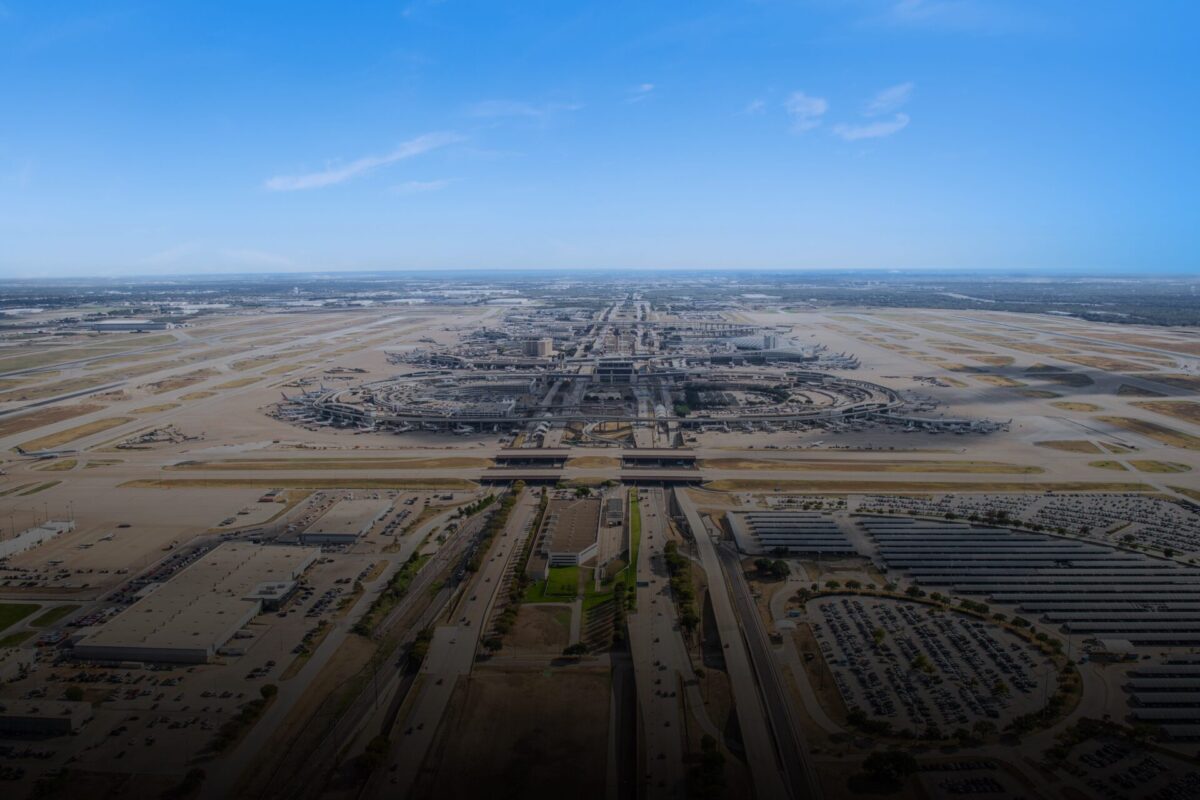
As well as being very big and very busy, Dallas/Fort-Worth has seven runways, just one less than the airport with the most – Chicago O’Hare, with eight. Like the other airports on this list, it is still expanding, with a long-discussed Terminal F on the cards as well as a $2.7 billion project to renovate Terminal C.
5. Istanbul Airport (IST)
29 square miles
| Opened | 2019 |
| Hubbed airlines | Turkish Airlines |
| Annual passenger traffic | 80 million (2024) |
| Runways | 5 |
| Terminals | 1 |
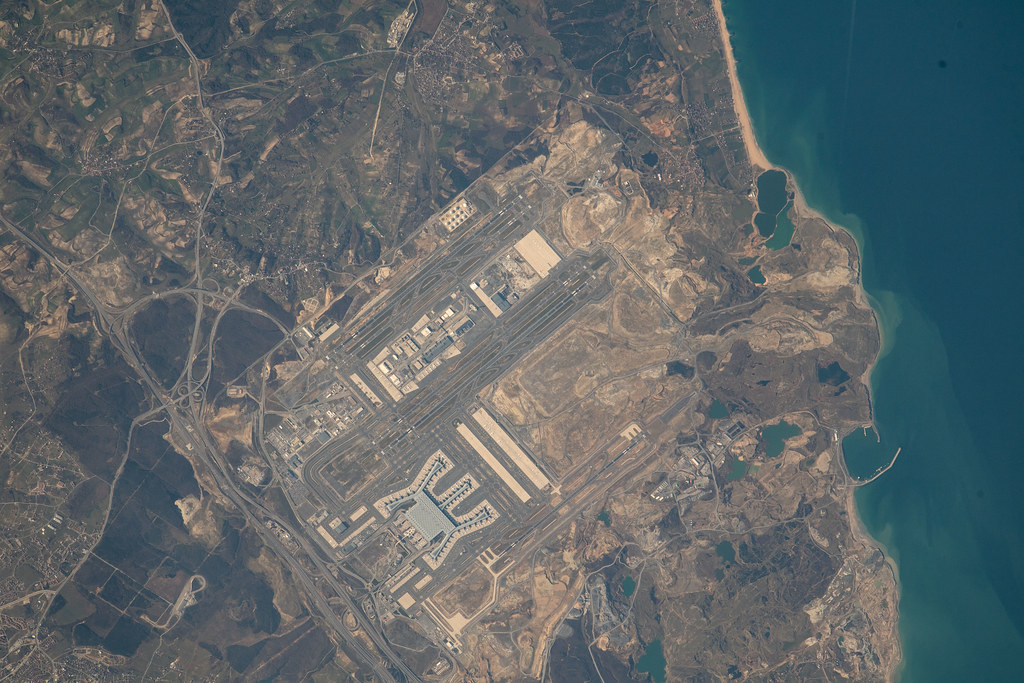
Since its opening in 2019, Istanbul Airport has become a major global hub for Turkish Airlines. The airport has one terminal, serving both domestic and international flights.
What sets Istanbul Airport apart is its impressive runway infrastructure, with five runways, some exceeding 13,000 feet in length. This capacity allows for efficient handling of a large number of flights. Additionally, the airport offers modern amenities like lounges, shops, and dining options, making it a comfortable and convenient travel choice for passengers connecting between Europe and Asia.

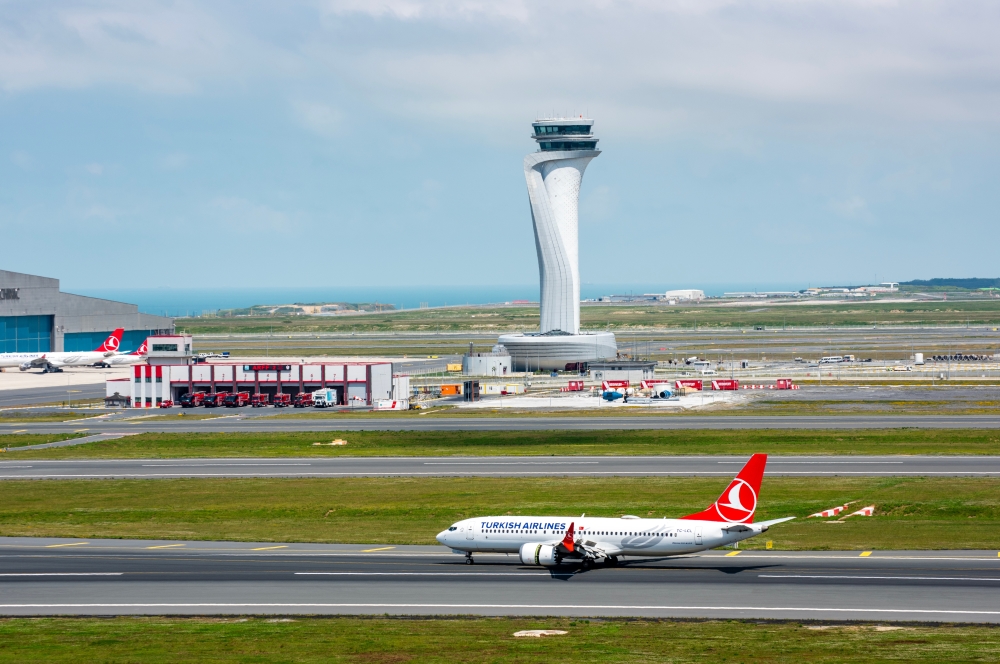
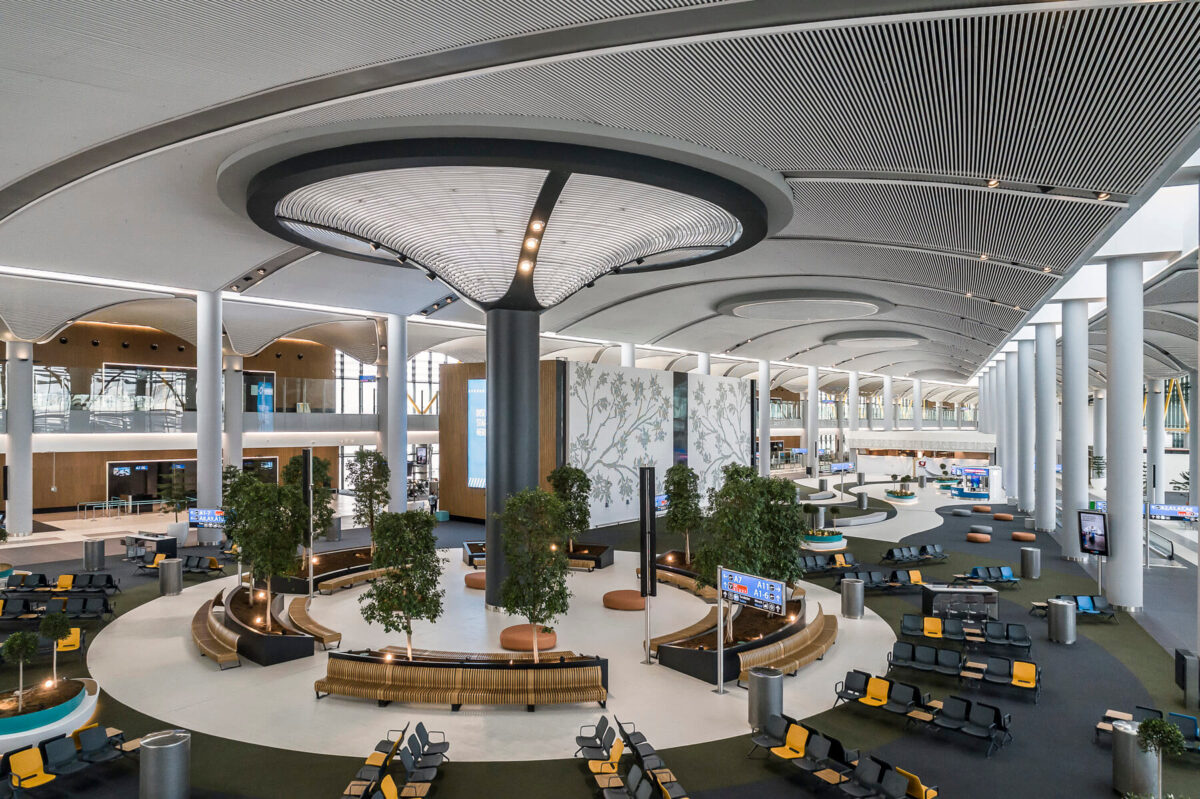
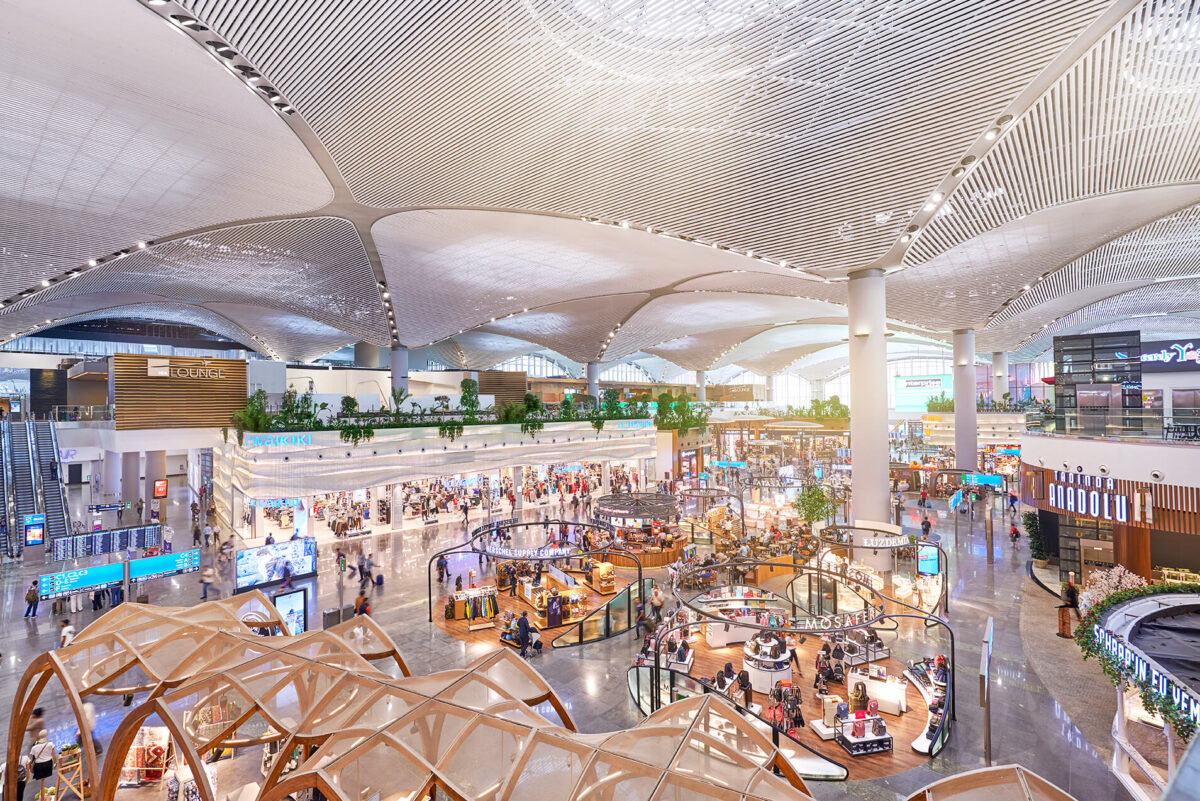

The new Istanbul airport stands as Turkey‘s largest infrastructure project, and it is still being built. It’s expected to be fully completed in 2027, at which point it will have eight runways, 16 taxiways and the capacity to handle 150 million passengers a year.
4. Kuala Lumpur International Airport (KUL)
39 square miles
| Opened | 1998 |
| Hubbed airlines | Batik Air, Malaysia Airlines, Raya Airways |
| Annual passenger traffic | 47 million (2023) |
| Runways | 3 |
| Terminals | 2 |
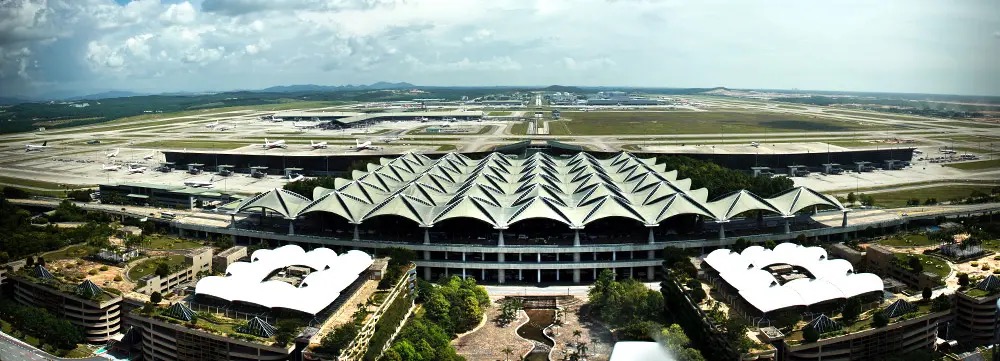
Located in Sepang, Selangor, Kuala Lumpur International Airport (KUL) is around 28 miles south of the city center and a hub for national flag carrier Malaysia Airlines. Also hubbed at the airport are Batik Air and Raya Airways, while AirAsia has an operating base here.
Housed on 39 square miles of former agricultural land, the airport has plenty of opportunities for expansion. In the past, KLIA was separated into the main international terminal and KLIA2 for regional and domestic flights. However, in 2023, the airport rebranded the two facilities as simply Terminal 1 and Terminal 2.
It has three parallel runways and almost eight million square feet of terminal space. At present, it can handle 70 million passengers a year, although it hasn’t come close to that capacity yet.
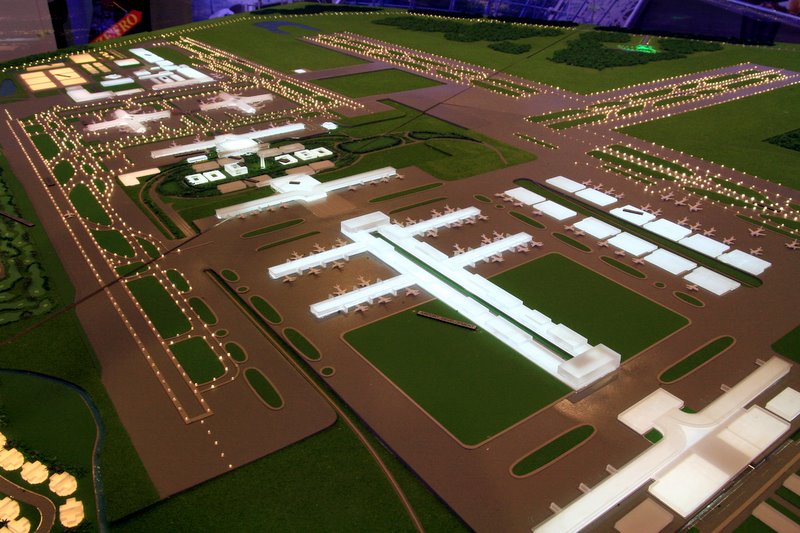
Nevertheless, Malaysia Airports has already announced plans to increase capacity, taking Terminal 1 from 30 million to 59 million passengers a year, and Terminal 2 from 45 million to 67 million per year. There are also plans to build a Private Premium Terminal, which should start in 2025, and Hajj and Umrah facilities with Saudi Arabia preclearance for pilgrims traveling to Mecca.
3. Denver International Airport (DEN)
53 square miles
| Opened | 1995 |
| Hubbed airlines | Denver Air Connection, Southern Airways Express, United Airlines |
| Annual passenger traffic | 82 million (2024) |
| Runways | 6 |
| Terminals | 1 + 3 concourses |
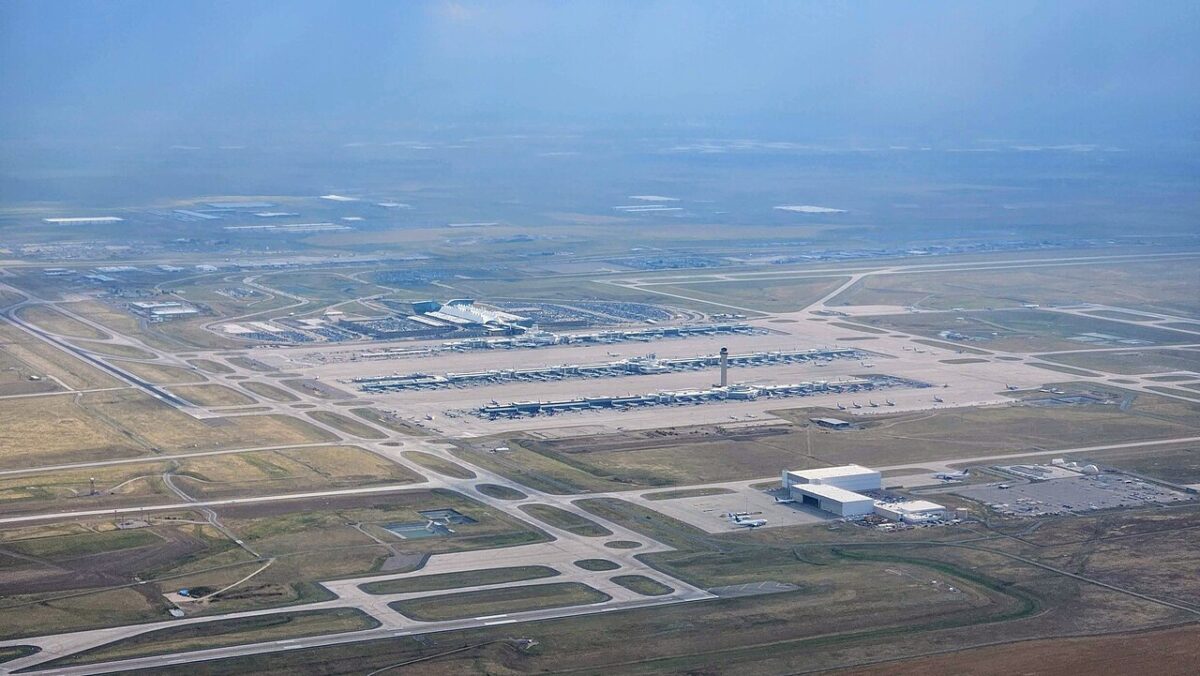
Denver International Airport is the USA’s largest airport by size. At 53 square miles, it’s like a small airport city. Transporting over 80 million passengers a year, Denver is ranked by OAG as sixth busiest in the world and third busiest in the US, behind Dallas and Atlanta.
Notably, the airport boasts the longest public-use runway across North America and the seventh longest globally, stretching an impressive 16,000 feet. Serving as a hub for United Airlines, Southern Airways Express, and Denver Air Connection, it also operates as a base for Southwest Airlines and Frontier Airlines.
Denver Airport’s single terminal is connected to three primary midfield concourses—A, B and C. To accommodate its dynamic air traffic, the airport is equipped with a total of six runways.
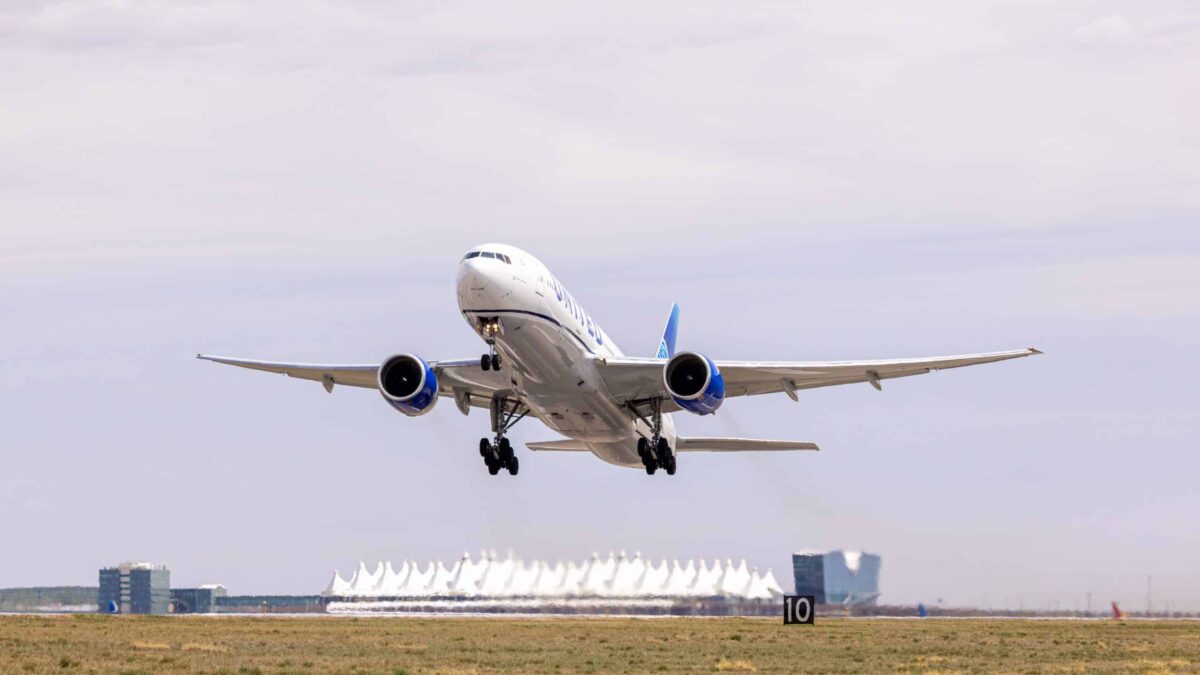
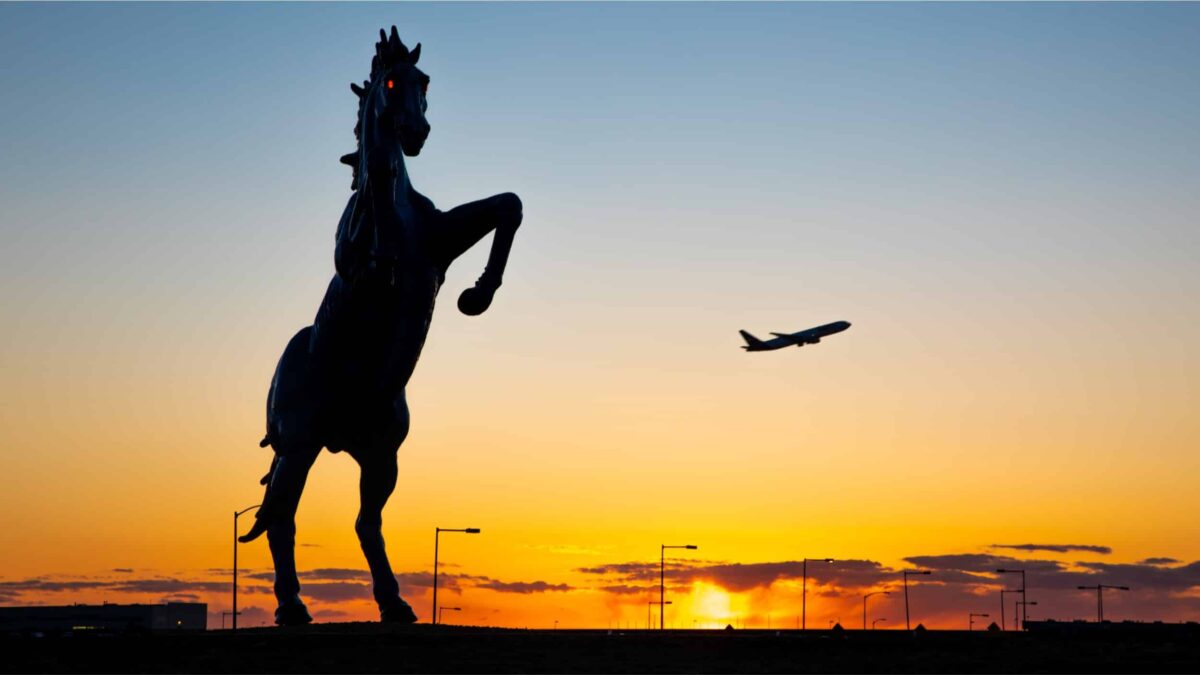
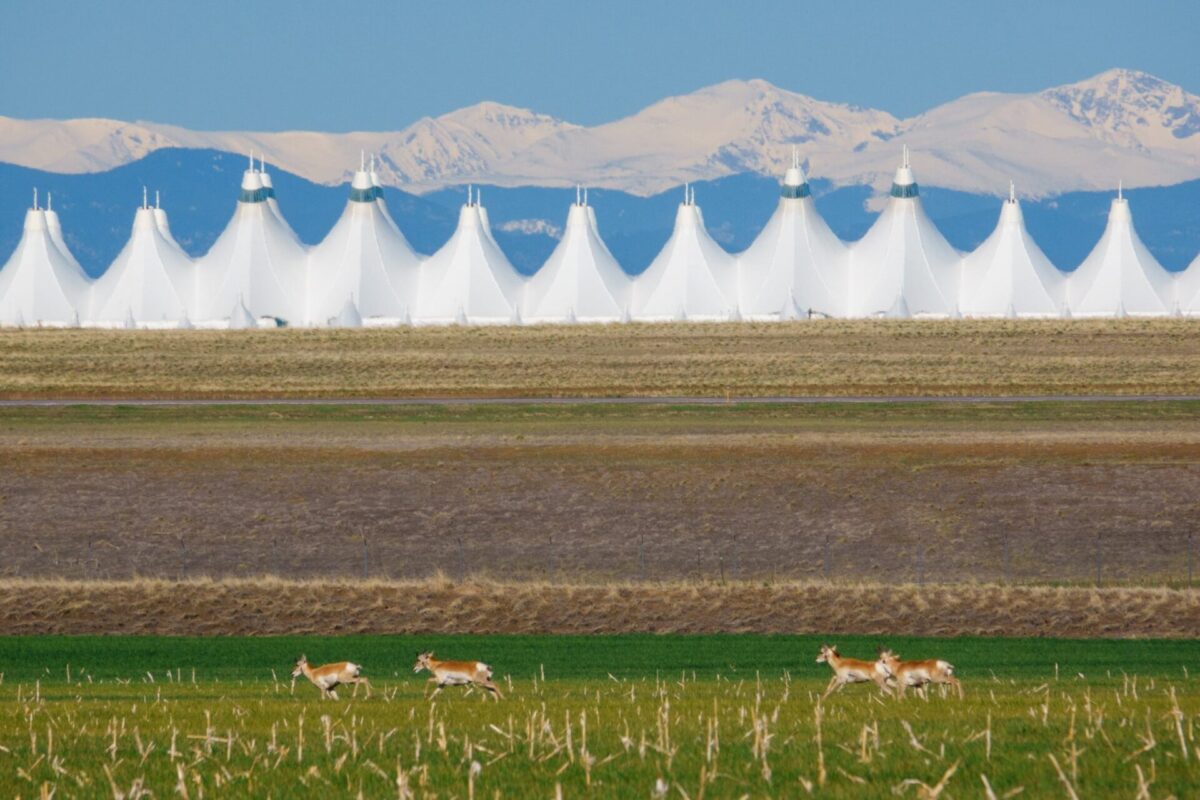
Enhancing its distinctiveness, Denver International Airport showcases a collection of iconic and unique artworks. Among these, one particularly noteworthy piece is the huge rearing blue horse with red eyes, affectionately known as ‘Bluecifer’. Meanwhile, the airport’s iconic Teflon-coated fiberglass roof pays homage to the Rocky Mountains.
2. King Khalid International Airport (RUH)
145 square miles
| Opened | 1983 |
| Hubbed airlines | Flynas, flyadeal, Saudia |
| Annual passenger traffic | 37 million (2023) |
| Runways | 2 |
| Terminals | 5 |
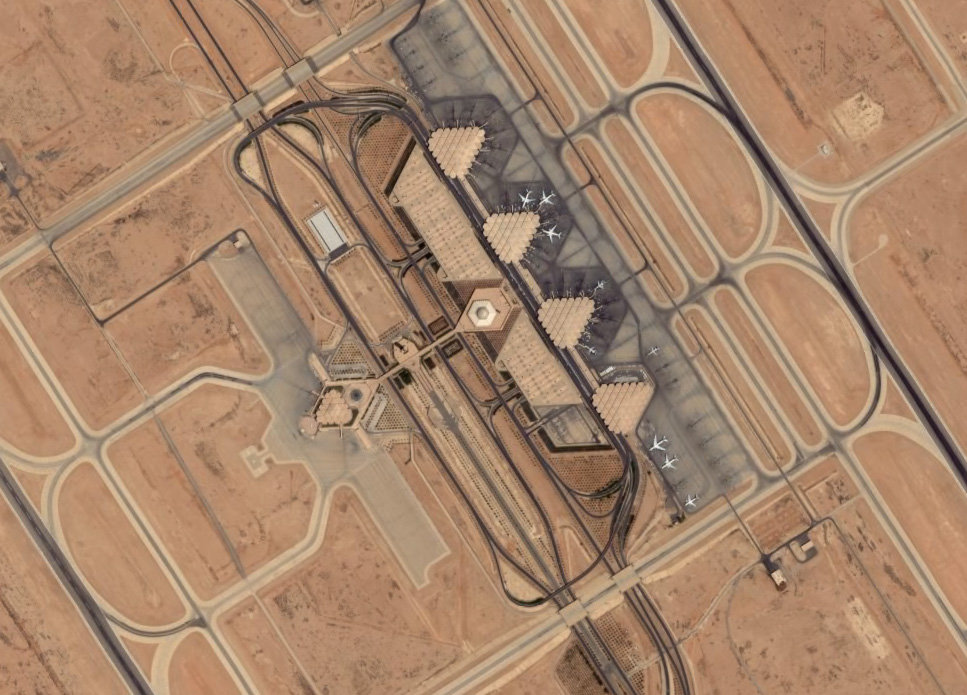
Three times the size of the next largest airport, King Khalid is the airport for Riyadh and was opened over 40 years ago, in 1983. It will be the home of the forthcoming airline Riyadh Air, and is also a hub for Saudia and local low-cost carriers Flynas and flyadeal.
The airport has five main passenger terminals as well as a general aviation terminal and one terminal regular visitors never get to see. The Royal Terminal is for heads of state and other high-ranking VIPs, featuring gardens, fountains and a 1,300-foot-long ceremonial hall connecting it to the mosque.
King Khalid Airport was honored in Cirium’s on-time performance report at the end of 2024. It won both the Large Airport and Global categories for exemplary on-time performance, achieving 86.65% on-time departures.
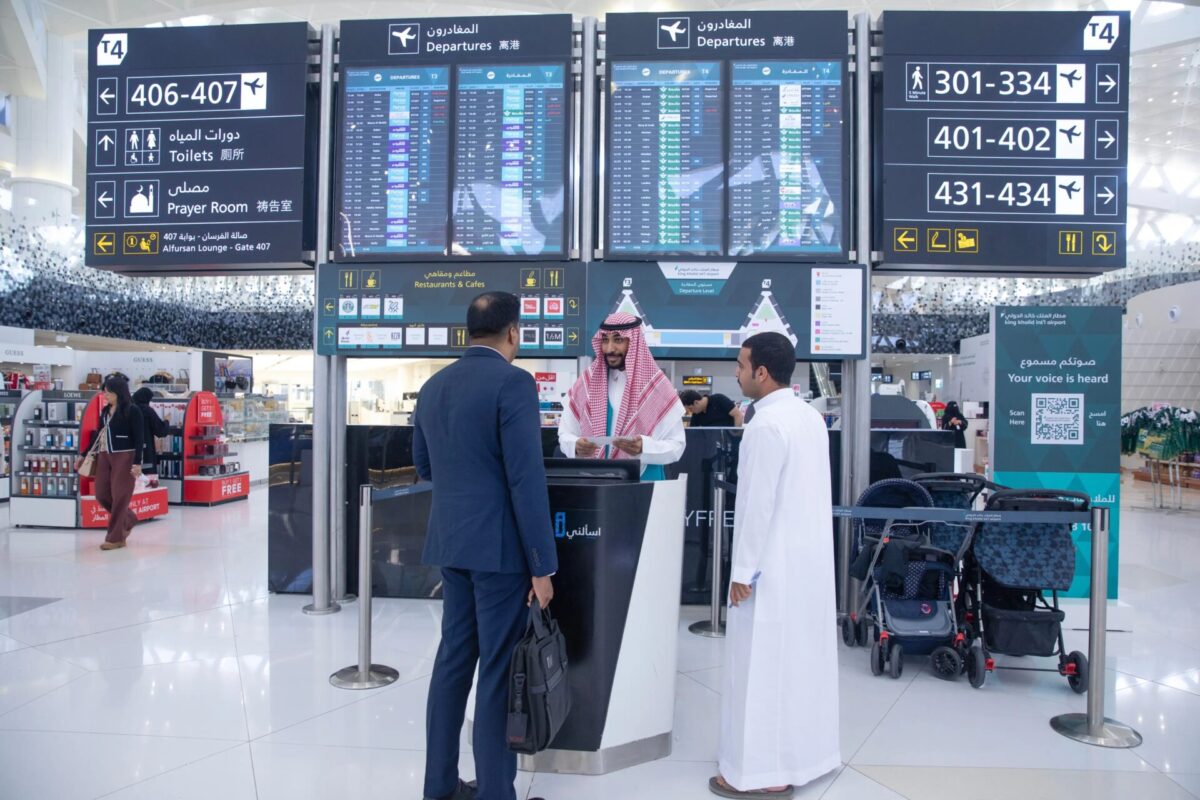


As part of Saudi’s Vision 2030 investments, the airport will be significantly expanded by 2030 to add four more runways and increase its passenger capacity to 120 million a year. When complete, the airport is due to be renamed King Salman International.
1. King Fahd International Airport (DMM)
300 square miles
| Opened | 1999 |
| Hubbed airlines | Flynas, flyadeal |
| Annual passenger traffic | 10 million (2023) |
| Runways | 2 |
| Terminals | 3 |
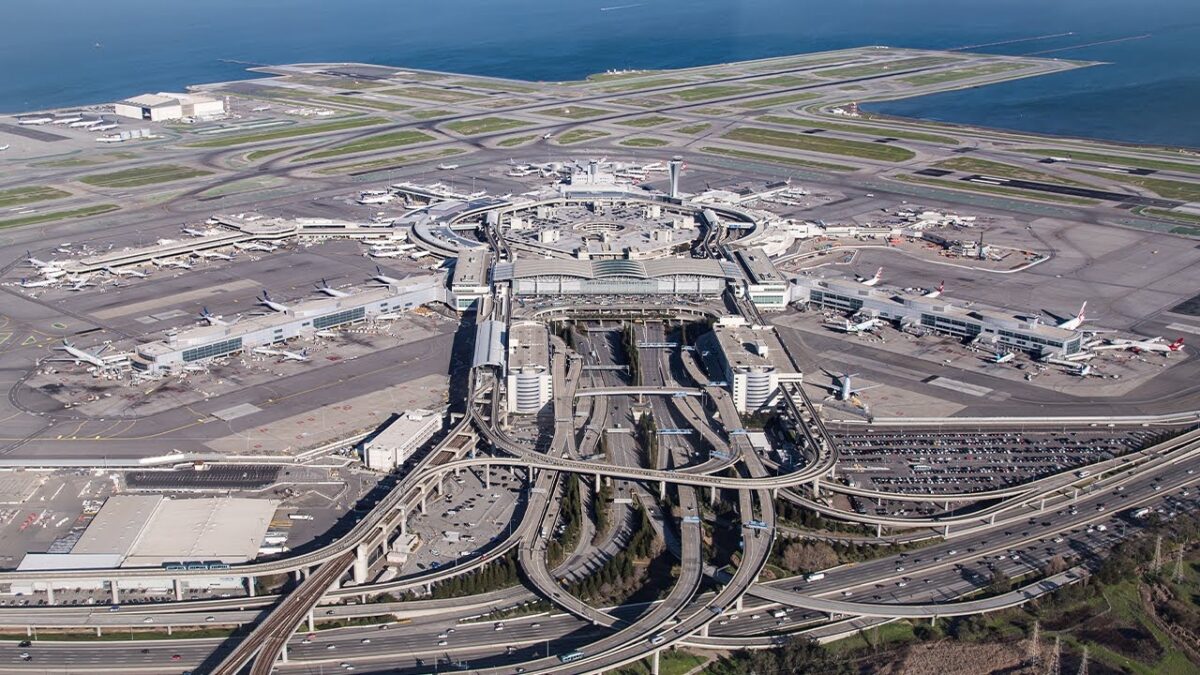
If you thought King Khalid was large, the site is dwarfed by the behemoth of an airport in Dammam, Saudi Arabia. Covering 300 square miles, King Fahd International Airport has been recognized by Guinness World Records as the largest airport in the world by size.
To put it in perspective, 300 square miles is about the same size as the entire country of Bahrain and a good 20 square miles larger than Singapore. However, only around 14 square miles of the site is being utilized for airport operations at present.
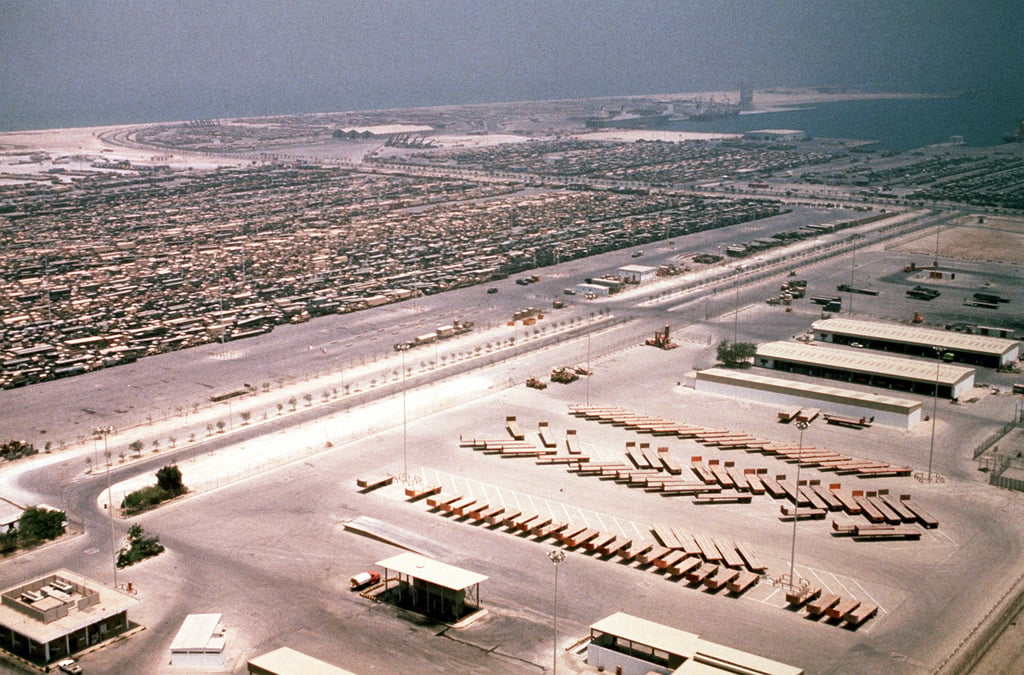
The terminal building spans six floors and takes up a total area of 3.5 million square feet. It was the first airport in Saudi Arabia to adopt duty free stores, and work is ongoing to expand the terminals even more, improving the passenger flow.
Over the past two decades, the growth at King Fahd Airport has been exponential. In 2001, it handled just 2.5 million passengers. By 2015, it had surged to more than nine million. Official statistics for 2024 are not out yet, but initial reports suggest the airport handled as many as 12 million passengers last year.
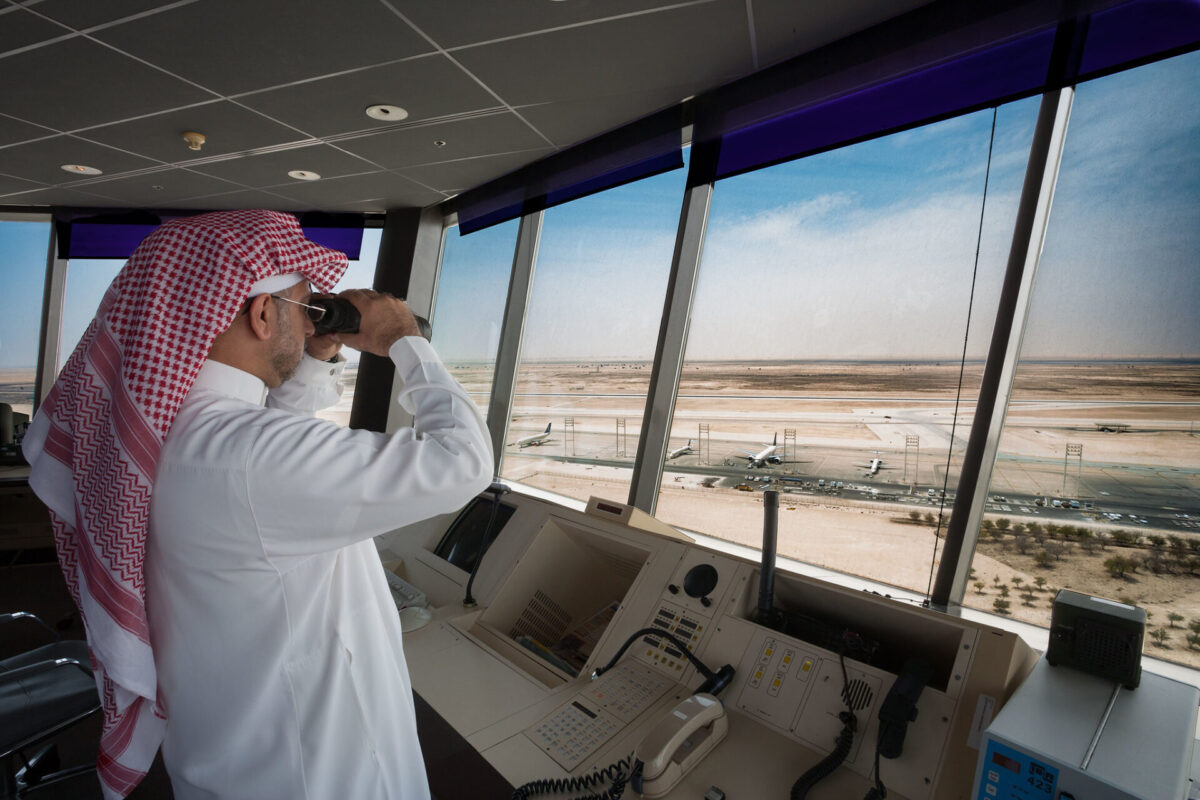
King Fahd Airport is the world’s largest airport by size at the time of writing, and thanks to the massive site it’s built on, is unlikely to be eclipsed by any other airport project. However, there is a giant of an airport being built just down the road, which won’t compete in size but will have the highest capacity of any airport in the world.
Located in Riyadh, King Salman International Airport will boast six parallel runways and is expected to handle 120 million passengers per year, making it the largest in the world in terms of passenger numbers. While the airport has not yet been given a designated IATA code, it is expected to open by 2030.

